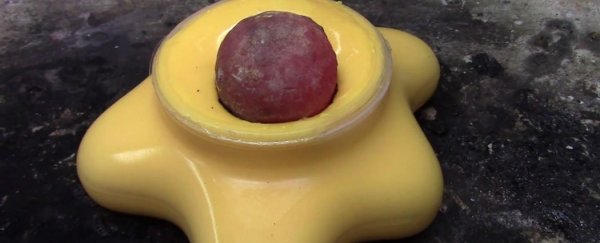
Like Twinkies, Gak is a beautiful and terrifying manifestation of chemical prowess that produces something that seems so simple on the surface, but then you find out they're not baked, or in the case of Gak, that it doesn't melt in a fiery blaze of glory when a red-hot ball of nickel is dropped in its plasticky belly.
So what actually is Gak? It's a nifty type of polymer that's been classified as a non-Newtonian fluid because it displays the characteristics of both a solid and a liquid, depending on the amount of force that's applied to it. It's made from a simple glue mixed with a small amount of borax - a common household chemical also known as sodium borate, sodium tetraborate, or disodium tetraborate - and water, which you can throw together at home with the kids if you don't mind having homemade Gak rolling all over your carpet.
Once combined, these ingredients form a mass of long strands of molecules, and inside these molecules are covalent bonds, but between them are hydrogen bonds. As hydrogen bonds are weaker than covalent bonds, just a little bit of force is needed to break them, which allows the Gak to 'flow' like a liquid. But if you apply a lot more force - for example, if you feel like whacking the Gak with a hammer - you'll break the covalent bonds too, which causes the Gak to break or tear apart like a solid.
And thanks to the video above, by YouTuber carsandwater, we now know that it takes a lot to get it melting. Gak is a commercialised form of 'silly putty', which was discovered by accident by inventors in the UK who found it would bounce when dropped, was better at stretching than regular rubber, and had a very high melting temperature. One of the most important ingredients used in silly putty is polydimethylsiloxane, which is commonly used silicon-based organic polymer that has an extremely high tolerance to heat. The property has been emulated by the manufacturers of Gak, which means that even when exposed to heat that would melt our flesh off, it just becomes more viscous.
Watch the video above to see the magic amazing science in action.
Source: Digg
